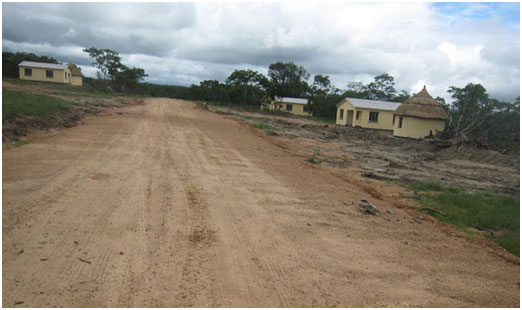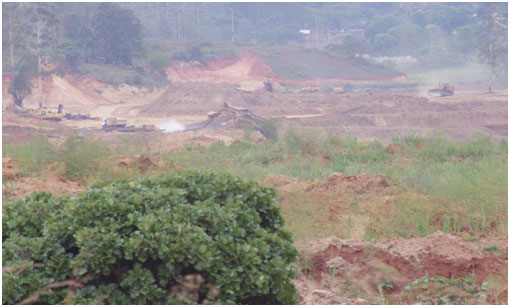Why the need for sustainable management of resources?
Although the concept of sustainable development is not new it has only received prominence over the past 25 or so years with the Brundtland’s Report, Our Common Future, which laid down the framework of sustainable development concepts on which world leaders built on at the Earth Summit in 1992 in Rio de Janeiro. Although the Brundtland’s Report defined sustainable development simply as, “… development that meets the needs of the present without compromising the ability of future generations to meet their own needs”, it currently means different things to different people. This is because different groups of people, whether business, local government, or international institutions have tended to give the concept their own interpretation according to their line of activity.
Despite different groups of people giving different interpretation, the concept of sustainable development has some similar underlying characteristics. For example all interpretations have the following two characteristics: (i) the need to ensure the rights of the poor and of future generations and (ii) the need to have an understanding of the inter-connections, inter-relations and inter-dependence between the environment, economy and society. Good natural resource management practices should therefore take into account issues of equity and fairness and ecosystem integrity. Recommendations of the World Commission on Environment and Development in 1987 underscored the need to: (i) apply concepts of eco-efficiency and sustainable livelihoods, and (ii) to increase public participation in concepts of sustainable development.
Indeed there is need for public participation if sustainable development is going to be attained. Approaches to sustainable development will differ from place to place and with time as well. This is the reason why early environmentalists recommended that we should “think globally but act locally.” This emphasises the point that it is how the local population uses and manages the local natural resources that eventually counts in sustainable development. If these practices are integrated throughout the global, then we attain a sustainable globe. The setting up Local Agenda 21, which now called Local Action 21 emphasises the need to take into account local public participation. Although current thinking of environmentalists seem to emphasise sustainability of the globe, we should always remember it all starts at the local level.
Effective management of natural resource requires good governance mechanisms that guarantee equitable and fair distribution of resources. It therefore stimulates socio-economic growth in communities at the local level. Although sustainable development is not a detailed plan of action, it contains critical elements for fighting poverty and reducing conflict over resources. This is of particular importance in countries such as Zimbabwe that have a rich natural resource endowment. Zimbabwe has a large number of mineral deposits including the precious platinum, gold and diamonds. It also boasts of a rich wildlife that is currently found mainly in the numerous national parks, nature parks and game parks found all over the country.
Unfortunately however questions have been asked whether the current management practices can lead to sustainable development. This is because in many cases local communities have been excluded from participating in natural resource extraction and use. This has led to resource deprivation, the creation of artificial scarcity, accentuating poverty in some cases and creating conflict in others. Unfortunately there has not been much research on the relationship between socio-economic development in local communities and the issue of differential allocation of resources.The idea of building alternative accommodation for displaced victims fulfil people’s right to shelter but does not provide for sustainable human development. Over a thousand families at Arda Transau are still surviving on food handouts two years after leaving Marange to pave way for diamond mining. The government remains quiet about the source of livelihood for these communities in order for them to sustain their growing families.

Model houses for relocated families at Arda Transau
Differential allocation of resources is clearest in the mining sector. Local communities hardly participate in large-scale mining. The mining that is carried out by local communities is the less productive small-scale mining as in the case of Penhalonga gold production and the infamous and largely illegal gold panning. Foreign companies and Zimbabwean’s who are rich enough to form partnerships with the foreign companies control the lucrative large-scale mining. There are numerous examples of such a set up throughout the country. A review of the production of the precious minerals in Zimbabwe shows that gold, platinum and diamond production is largely in the hands of foreigner.

Mining along the Mutare River destroying the water system and polluting the environment
It is however not in mining only where one finds differential allocation of resources. There is also unequal access to wildlife between the local communities and those who have the money to enjoy the leisure of visiting the national and game parks. The majority of Zimbabweans cannot afford the site seeing and game viewing. Even local communities living adjacent to the national and game parks do not enjoy the biological diversity in their vicinity. The media-based approach (the command and control) management system of most national and game parks in Zimbabwe only supports those with money to pay for viewing the biological diversity. This has created conflict between the adjacent local communities to the national/game park and the park authorities. For example there is constant conflict between local communities living near Rhodes Nyanga National Park and the park authorities. The question people are asking is, “What is the value of the National Park and from whose point of view?”
More than 50% of the Zimbabwean population lives in the rural areas where they are living side by side those natural resources which legislation is forbidding them to extract. The same piece of legislation allows foreigners to extract the resources at the expense of the local communities. It is a paradox that people who have lived with a resource all their lives are denied access. This shows lack of knowledge on issues of access to resources, ownership and control of resources as is expounded in the doctrine of “Permanent Sovereignty over Natural Resources.” If the local communities were aware of this doctrine, perhaps they would have put up a fight to prevent foreigners from taking away their resources without equitable sharing of profits. The issue of educating communities of their right to resources in their area can be an important step towards the attainment of good natural resource management and sustainable development.